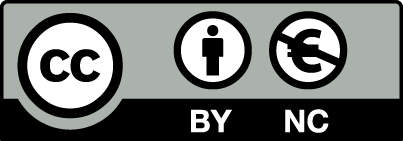Please use this identifier to cite or link to this item:
https://hdl.handle.net/10419/309463 Authors:
Year of Publication:
2023
Citation:
[Journal:] Applied Health Economics and Health Policy [ISSN:] 1179-1896 [Volume:] 21 [Issue:] 5 [Publisher:] Springer International Publishing [Place:] Cham [Year:] 2023 [Pages:] 751-759
Publisher:
Springer International Publishing, Cham
Abstract:
Objectives: The German Pharmaceutical Market Restructuring Act (AMNOG, 2011) is a two-stage process to regulate the price of new pharmaceuticals in which price negotiations are conducted based on evidence-based medical benefit assessments using data from prior clinical trials. Although the act does not explicitly set a willingness-to-pay (WTP) threshold, the process itself implicitly establishes a WTP for health improvement. We evaluated the implicit WTP for prescription pharmaceuticals post-AMNOG in the German healthcare system from the decision-maker/payer perspective. Methods We extracted data on patient-group-specific annual treatment costs and endpoints from 2011 to 2021 from the dossiers assessed by the German Federal Joint Committee (FJC; Gemeinsamer Bundesausschuss). Using incremental cost-effectiveness ratios (ICERs), we calculated a WTP for the indications (I) diabetes, (II) cardiovascular disease, and (III) psoriasis weighted according to patient group size, first from the perspective of the decision-maker (approach A), and second from the perspective of the industry (approach B). To put clinical outcome measures into relation to one another, minimum clinically important differences (MCIDs) were derived from the literature and compared. Results The annual treatment costs of newly authorized drugs were substantially higher (both pre- and post-negotiation) than that of their comparators (e.g., psoriasis, pre-negotiation: €20,601.59, post-negotiation: €16,763.57; comparators: €5178.00). However, although newly launched drugs were more expensive than their comparators, they brought greater medical benefits and were more aligned with value ( r = 0.59, P < 0.001) than older drugs. We estimated WTP to vary widely by indication group [€33,814.08 per 1 percentage point hemoglobin A1c (HbA1c) reduction for diabetes, €10,970.83 per life year gained for cardiovascular disease, and €663.46 per 1% PASI decrease for psoriasis; approach A]. WTP was converted to MCID thresholds: diabetes: €16,907.04; cardiovascular drugs: no MCID existent to convert; and psoriasis: €33,173.00. WTP remained constant over time for diabetes and cardiovascular drugs but increased for psoriasis drugs. Conclusion This paper is one of the first to estimate the implicit WTP for prescription pharmaceuticals post-AMNOG and suggests that the WTP may vary between different therapeutic areas. Additionally, making different assumptions (approach A versus approach B) with regard to the assumed effectiveness in indication areas that had been declared as having no additional benefit by the FJC may explain the different perspectives of decision-makers and of the pharmaceutical industry on the value of a pharmaceutical.
Persistent Identifier of the first edition:
Document Type:
Article
Document Version:
Published Version
Appears in Collections:
Files in This Item:
File
Description
Size
Format
Items in EconStor are protected by copyright, with all rights reserved, unless otherwise indicated.

